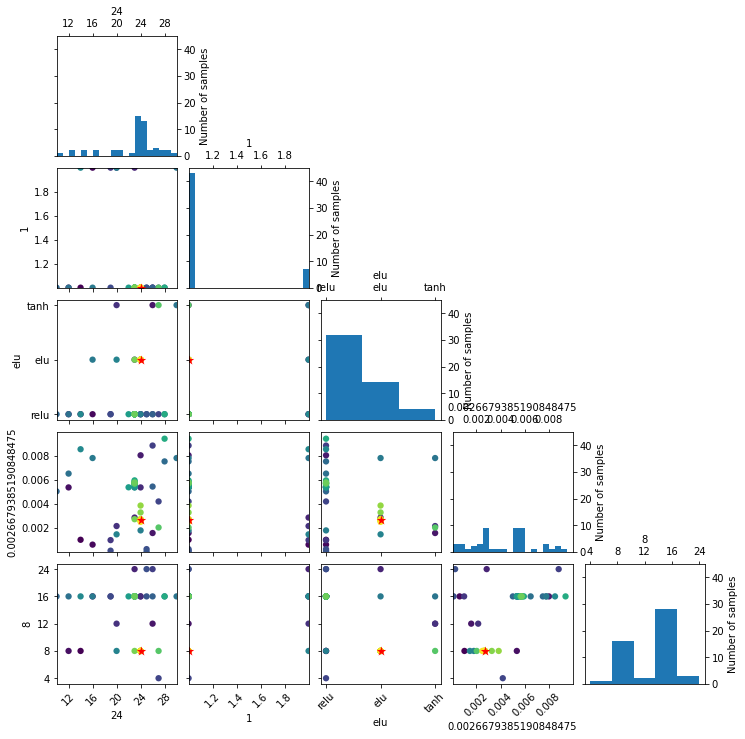def objective_fn(
prefix: str = None,
return_model: bool = False,
fit_on_all_training_data:bool = False,
epochs:int = 100,
verbosity: int = 0,
**suggestions
)->Union[float, Model]:
"""
This function must build, train and evaluate the ML model.
The output of this function will be minimized by optimization algorithm.
In this example we are considering same number of units and same activation for each
layer. If we want to have (optimize) different number of units for each layer,
willhave to modify the parameter space accordingly. The LSTM function
can be used to have separate number of units and activation function for each layer.
Parameters
----------
prefix : str
prefix to save the results. This argument will only be used after
the optimization is complete
return_model : bool, optional (default=False)
if True, then objective function will return the built model. This
argument will only be used after the optimization is complete
epochs : int, optional
the number of epochs for which to train the model
verbosity : int, optional (default=1)
determines the amount of information to be printed
fit_on_all_training_data : bool, optional
Whether to predict on all the training data (training+validation)
or to training on only training data and evaluate on validation data.
During hpo iterations, we will train the model on training data
and evaluate on validation data. After hpo, we the model is
trained on allt he training data and evaluated on test data.
suggestions : dict
a dictionary with values of hyperparameters at the iteration when
this objective function is called. The objective function will be
called as many times as the number of iterations in optimization
algorithm.
Returns
-------
float or Model
"""
suggestions = jsonize(suggestions)
global ITER
# i) build model
_model = Model(
model=MLP(units=suggestions['units'],
num_layers=suggestions['num_layers'],
activation=suggestions['activation'],
dropout=0.2),
batch_size=suggestions["batch_size"],
lr=suggestions["lr"],
prefix=prefix or PREFIX,
epochs=epochs,
input_features=data.columns.tolist()[0:-1],
output_features=data.columns.tolist()[-1:],
verbosity=verbosity)
SUGGESTIONS[ITER] = suggestions
# ii) train model
if fit_on_all_training_data:
_model.fit(x=TrainX, y=TrainY, validation_data=(TestX, TestY), verbose=0)
prediction = _model.predict(x=TestX)
true = TestY
else:
_model.fit(x=train_x, y=train_y, validation_data=(val_x, val_y), verbose=0)
prediction = _model.predict(x=val_x)
true = val_y
# iii) evaluate model
metrics = RegressionMetrics(true, prediction)
val_score = metrics.rmse()
# here we are evaluating model with respect to mse, therefore
# we don't need to subtract it from 1.0
if not math.isfinite(val_score):
val_score = 9999
print(f"{ITER} {round(val_score, 2)}")
ITER += 1
if return_model:
return _model
return val_score




